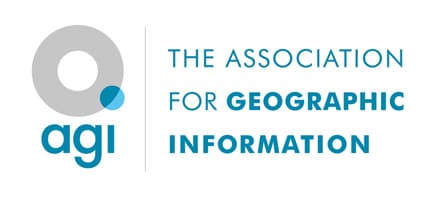On Thursday 14th July the AGI ECN, in partnership with the British Cartographic Society (BCS), held a masterclass in geographic data visualisation. Geographic data visualisation is a means by which we can tell the story of geographic data.
The session started with a great presentation from Paul Naylor, Vice Chair of the BCS and Technical Relationship Consultant and GeoDataViz lead at Ordnance Survey (OS), including the somewhat mind blowing fact that 90% of the world’s data today has been created in the last 2 years alone (Marr, 2018). He then touched on the benefits of geographic data visualisation including the effective communication of information and the ability to identify trends, patterns and relationships. It is however really important that you get the visualisation of the data right as it can be very easy to misinform people through its presentation. There are multiple ways geographic data can be visualised including animations, dashboards, storymaps and thematic maps. It was this last type of visualisation that Paul focused on in his presentation.
A thematic map is a type of map specifically designed to show a particular theme connected with a specific geographic area, such as temperature variation, rainfall distribution or population density.
Wikipedia
Paul briefly went through the different types of thematic maps including dot density, proportional symbol, choropleth, heat mapping and equal area cartograms. He finished the presentation by outlining the eight cartographic design principles OS have developed. These include understanding user requirements so the map’s message can be clearly communicated in the best possible way, and considering the display format of the finished map so the map can be designed based on the final place it will end up.
Following the presentation attendees were split in to smaller groups to discuss how they would visualise a dataset showing how many refugees fled Ukraine between February and March this year. One of the key things to come out of these discussions was how to best visualise the flow of people fleeing from Ukraine to surrounding countries. Whilst arrows might seem like the obvious choice these are often used to show paths of invasion, and so not really appropriate in this scenario. The group then came back together to go through a couple of real life examples presenting the data, one of which from the Financial Times used cylinders rather than arrows to represent the flow.
Massive thanks to Paul for giving up his time to do the masterclass, Jody Shaw ECN event coordinator for organising and chairing the event, and all those that attended. Keep an eye out for details of the next AGI ECN event which we’ll be releasing shortly!
Marr, B. (2018) How Much Data Do We Create Every Day? The Mind-Blowing Stats Everyone Should Read. Forbes. https://www.forbes.com/sites/bernardmarr/2018/05/21/how-much-data-do-we-create-every-day-the-mind-blowing-stats-everyone-should-read

